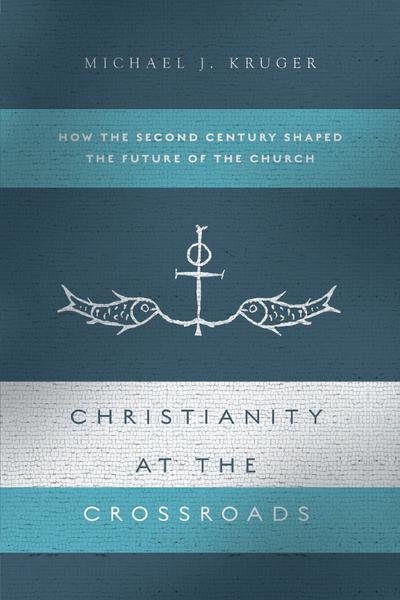Cinderella, you shall go to the ball!

The second century is arguably the Cinderella of the early church, generally neglected in favor of other, apparently more exciting and accessible, periods. It is populated by largely  shadowy figures about whom we know enough to be tantalized, even impressed, but it lacks the giant intellects and the elaborate doctrinal disputes and formulations that emerge from the third century onwards. Yet, as Michael Kruger argues in his new book, Christianity at the Crossroads: How the Second Century Shaped the Future of the Church, this period is critical for understanding the development of the post-apostolic church. Issues of theology, authority, worship, ecclesiology, culture and canon all emerge at this time and directions of later discussions are established. Further, the period also has a more immediate practical relevance for us: there is much to be gained from reflecting on the analogies between the church in the West in our day and that of Christianity in a largely indifferent and at times overtly hostile Roman empire.
shadowy figures about whom we know enough to be tantalized, even impressed, but it lacks the giant intellects and the elaborate doctrinal disputes and formulations that emerge from the third century onwards. Yet, as Michael Kruger argues in his new book, Christianity at the Crossroads: How the Second Century Shaped the Future of the Church, this period is critical for understanding the development of the post-apostolic church. Issues of theology, authority, worship, ecclesiology, culture and canon all emerge at this time and directions of later discussions are established. Further, the period also has a more immediate practical relevance for us: there is much to be gained from reflecting on the analogies between the church in the West in our day and that of Christianity in a largely indifferent and at times overtly hostile Roman empire.
The historian of Christianity in the second century faces numerous problems. First, the primary evidence is often fragmentary and incomplete. Second (and often taking full advantage of the first), the existing secondary scholarship is frequently tendentious, driven by the desire to justify later convictions, whether that be the primacy of the Roman see or the ineradicable and incoherent doctrinal pluralism of the post-apostolic church, to cite but two examples. Kruger’s expertise is New Testament and he has done extensive work in the area of canon development and the emergence of orthodoxy. He is therefore well qualified to guide the reader through this complicated territory. If you teach patristics, this book should be on the bibliography.
In seven chapters, Kruger addresses the sociology of the early church, the political and intellectual context, the emerging ecclesiastical structures and their relation to worship and Christology, the vexed issue of Gnosticism and the concepts of orthodoxy and heresy, the nature of early Christian unity, the role of texts in a largely illiterate society, and the emergence of the New Testament canon. That is a lot of ground to cover but Kruger writes with clarity, highlighting scholarly debates where necessary, and provides a helpful bibliography for further reading. This is a very accessible book but not of that type which pretends that the answers to difficult questions are easier than they really are.
The book is too rich to analyze in detail in a brief review so here are a couple of particularly helpful sections from a pastoral perspective. First, Kruger’s treatment of doctrinal pluralism in Chapter 4 deals concisely with the sort of questions that are raised by scholars such as Bart Ehrman and Elaine Pagels and which have crossed over, via their very accessible popular works, to the pew. Kruger handles the various matters well, offering no simplistic or naïve response but highlighting the numerous fallacies underlying their approach and also pointing to the coherence of the traditional narrative. The discovery of the Gospel of Judas should not shipwreck anyone’s faith. The second century church did have a clear understanding of the basics of the faith and orthodoxy was not simply the sum of the ideological convictions of those who ‘won.’
Second, Chapter 7, on the canon, is marvelous. Canonical questions come up with some frequency in both educational and pastoral contexts, and not simply because people have read the likes of Bart Ehrman and co. The question of James arises for anyone who knows anything about Luther. And a Christian who reads Jude with any degree of reflection is going to wonder about the inclusion of non-canonical material in such a work. Kruger’s chapter is a great summary of the work he has elaborated elsewhere on the formation of the New Testament and should provide hard-pressed pastors with a straightforward and concise statement of the issues, one to recommend to confused Christians or to use, via the literature cited in the footnotes, as the basis for further study.
In the conclusion, Kruger highlights three specific ways in which the second century has lessons to teach Christians today. The church then was marginal and therefore had a prophetic role in a society where it had no access to conventional avenues of power and influence. The church was clearly a ‘bookish’ religion. And the church kept her focus on worshipping Jesus, whatever the external pressures were. All three certainly apply to us today but I would add a fourth, with which I am sure Kruger would agree: the second century church was also wrestling with issues of authority, institutional, doctrinal, and canonical. At a time when the Protestant church is losing some of its brightest young people to Rome because of precisely these type of questions and a perceived failure of Protestantism to address them, Kruger’s work on the second century provides a helpful foundation for offering a thoughtful response to those so tempted.
Christianity is deeply embedded in history and therefore one of our most important tasks is to pass on to the next generation that tradition of apostolic teaching which we inherited from our faithful forebears. To be a thoughtful Christian today or to write theology with competence in the present one first needs to understand something of Christian history and competently to reflect upon the theology of the past. Only then can one grasp what particular movements or theologians were actually saying and why they said it in the manner in which they did. That simple point underpins the basic dogmatic task and also helps to keep today’s theologians humble. The kind of principled diachronic dialogue which the Christian faith thus requires means that good contemporary theology always stands in positive relation to good historical theology, always first listens with humility and receptivity to the past before presuming to speak to the present.
 Given this, and given the general ignorance of the second century outside of specialist academic circles, Michael Kruger’s volume is a welcome contribution to the growing body of literature which makes the patristic era accessible to non-specialists; and that it focuses on the neglected but vital second century makes it an excellent starting point for anyone wanting to understand how to interpret the important shifts – theological and ecclesiastical – from the biblical to the post-biblical era of the church and thus onwards to our own day.
Given this, and given the general ignorance of the second century outside of specialist academic circles, Michael Kruger’s volume is a welcome contribution to the growing body of literature which makes the patristic era accessible to non-specialists; and that it focuses on the neglected but vital second century makes it an excellent starting point for anyone wanting to understand how to interpret the important shifts – theological and ecclesiastical – from the biblical to the post-biblical era of the church and thus onwards to our own day.




